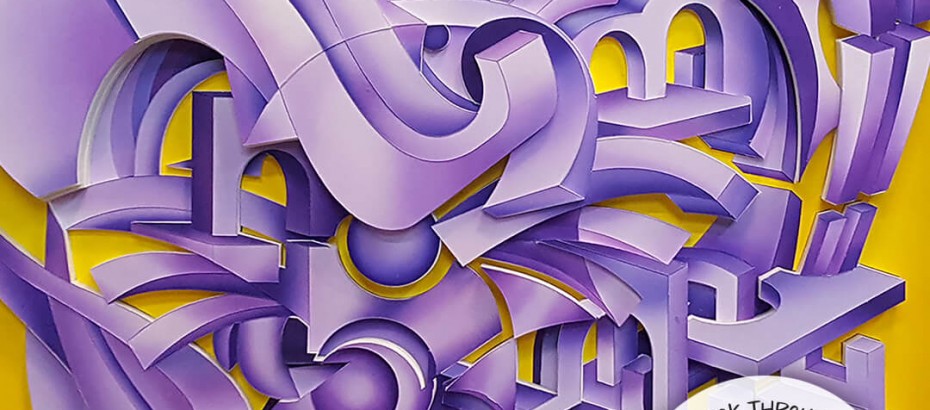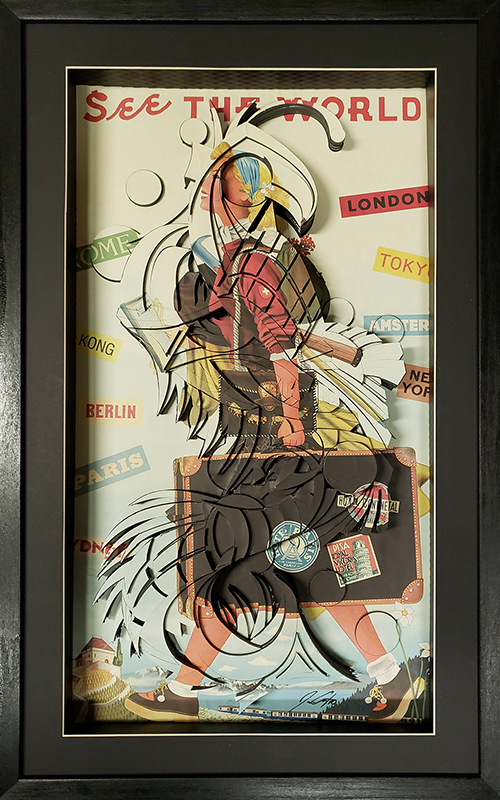
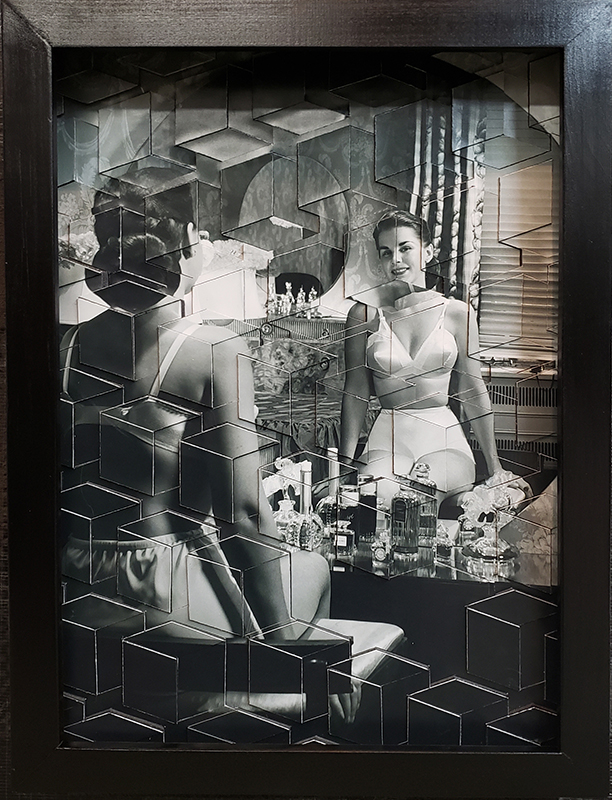
He defines art as anything that’s a creative approach to life. The depth of Jason Amatangelo’s mind and intricate thought process is manifested through the many layers of his abstract geometric artwork. He covers each piece in a protective layer of Plexiglas that must be wiped clean of nose smears, a direct result of the intrigue his art stirs in its viewers. They want to look as closely as they can into the piece to see every aspect of the complex puzzle before their eyes.
In school, Jason was always the kid drawing at recess. He graduated from Edinboro University with a degree in Applied Media Art in 2000. Over the next few years, he transitioned from realistic art forms to more abstract representations of the way he views things. He has taken several training courses in airbrush and other art forms over the years in an effort to enhance and expand his skills.
Jason is a husband and a father; his family sees him through his entire creative process with each piece and motivates him to keep going. He is also influenced by design and architecture. In addition to his artistic endeavors, he also owns a packaging company, which greatly influences his art.
I had the privilege of interviewing Jason and learning about his multifaceted art and way of thinking.
What changes have you noticed in your art before and after your education at Edinboro?
There’s a huge difference. When I was first coming out of school I was mostly creating comic books, realistic drawings, and photorealist paintings. In 2001, I moved to Columbus, Ohio, and a lot of my friends there who were abstract artists asked me why I was doing realistic art representative of what is outside of me, rather than interpretive art from within me. As I transitioned from realism to more abstract art, my style went from complex to simplistic, and back to complex as I got into the groove of my new style.
What is the most important thing you have learned in art school?
How to take constructive criticism from peers, and how to look at things as an artist. I learned how to visualize what is in my head and translate it to art. As for taking criticism, it’s important to learn to not be negative towards it or justify your weak points. Embrace criticism and use it to grow. Art is an interpretive form, and if the viewer interprets your piece differently than what you intended for it, that’s ok. As long as they connect to it, that’s a plus.
Do you go in with an idea or just let whatever happens happen?
I try not to go in with a total plan. A lot of my pieces start out in a sketchbook, beginning with a shape of form. From there, I get an idea of the depth of the piece as I go. I tend to have about ten sketches with different ideas going at once, and sometimes I find commonalities in themes and I decide to connect different ones. I come up with plans for multiple drawings at the same time. Once I have the drawing together, the rest of the process is technical.
What does your creative process look like?
It’s intense. There are about twelve steps from the initial drawing to the final piece, and the whole time I jump back and forth between traditional and digital techniques. I have the different steps laid out and I have to figure out where I’m going with my reference materials, looking at them like puzzle pieces that I need to put together to form a cohesive piece of art. The steps in my process save a lot of time for me, but I think people looking from the outside would get confused.
How close is the outcome to your original idea?
Very close. Once I have the original sketch down, I do a lot to maintain the integrity of that original sketch. Whatever randomness that will happen usually comes along in this stage. A lot of the work is done in the initial stages, but I don’t fully know what the outcome is going to be until it’s all complete.
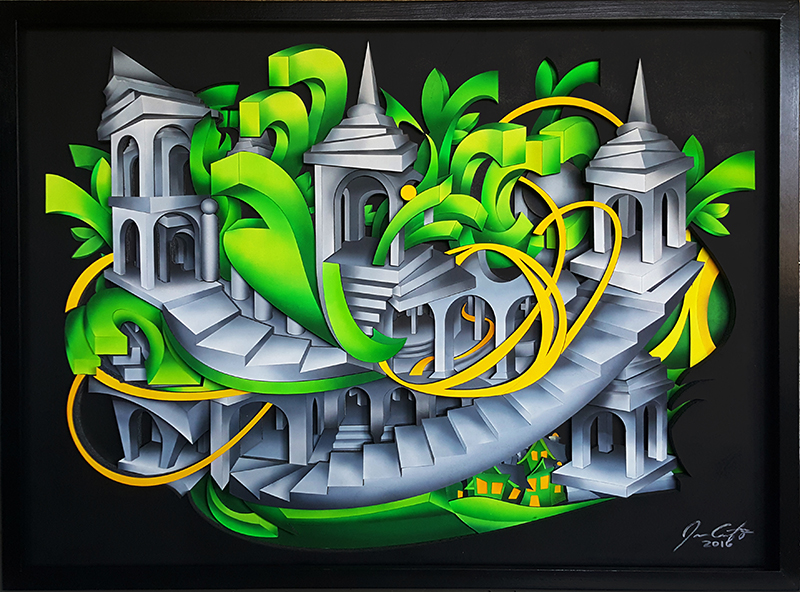
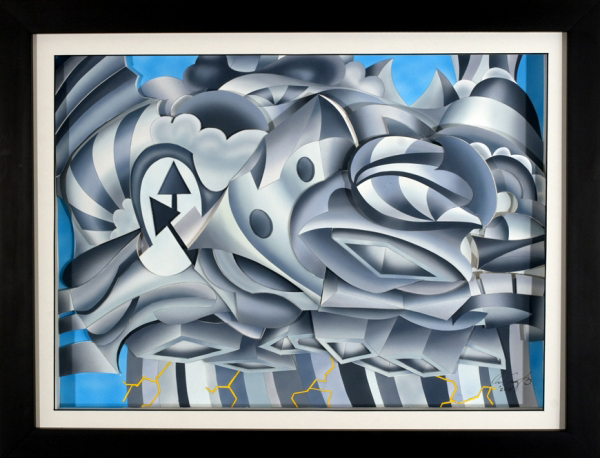
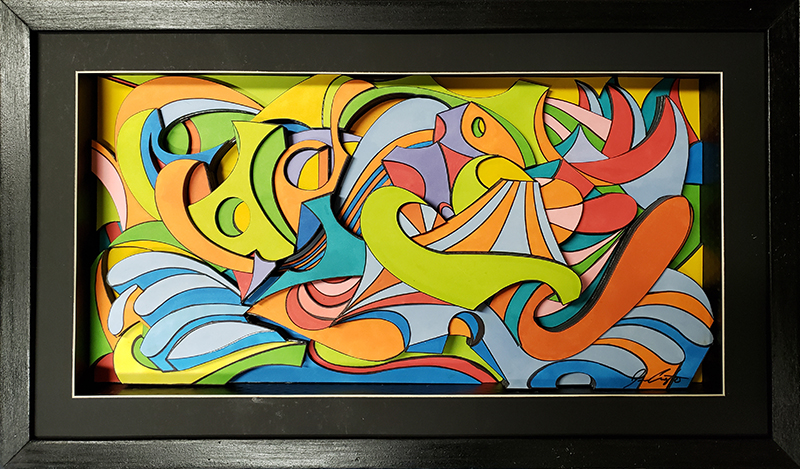
How does your family influence your art?
They’re a big influence. A lot of my art is driven by an urge to satisfy them, and they see the whole process as I go through it. My kids have grasped a lot of what I do. They join me in my studio and I teach them how to use some of my equipment. Involving them is a great bonding experience for me as a father. I print out vector images for them to color and incorporate their creative ideas into my own pieces sometimes. My wife is artistic, although she isn’t an artist. She works in childcare. I tend to think of it like this: what she does I could never do, and what I paint she could never paint. Working in childcare, she is constantly being creative in her interactions with the kids as individuals. Creativity, to me, is a wide range. It’s not just artistic things but also the way people live, think, and make decisions. It’s the story behind why and how those individual tendencies form, whether by innate personality or life experiences. If I have an art piece in a gallery and someone spills wine on it, it’s not ruined. That wine spill is now part of that painting’s journey. Our lives are a journey of where and how we create things.
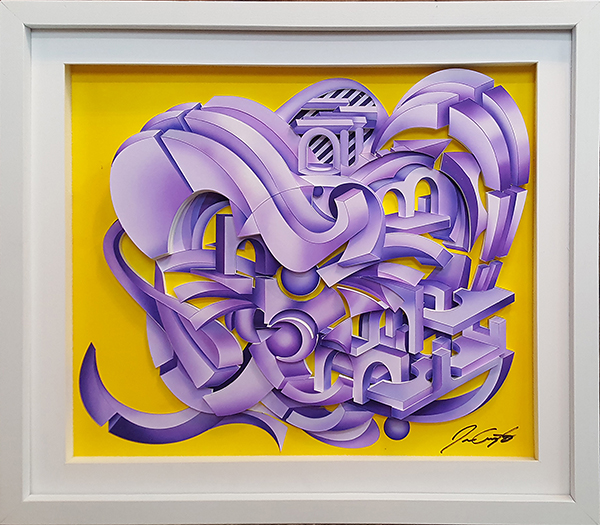
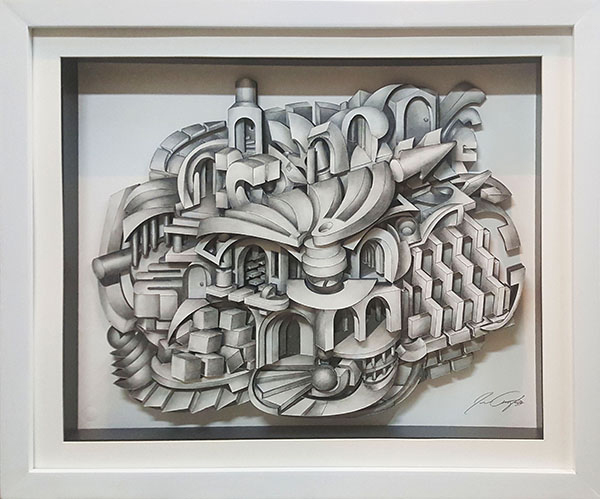
What is the most challenging aspect of your art?
Time. As a father and husband with a full-time job in addition to my art, it can be hard to find time to be an artist and balance everything else. My actual process also takes time, and lately l’ve been pondering whether I enjoy art more as a process or for the final outcome. I try not to put my blinders on to the point where I’m focused more on the process than the outcome. Even though it’s my passion, it still is a job and people rely on me. I try to satisfy gallery owners, commissioners, etc. because they’re helping me. I think about the people who buy my art in the sense that something I created is hanging on their wall. I am part of their lives, their story, even if they have never met me. When their friends visit them, something that is a part of me could be a topic of conversation even though we are strangers to one another.
What is a valuable piece of advice you can offer another artist?
Rejection is the key to success. I always tell people my stack of rejection letters is one hundred times the size of my acceptance letter stack. I take rejection as a badge of courage for trying. You don’t want to die with a "what if". Also, don’t be offended if someone doesn’t like your art or it doesn’t fit the theme of their gallery, etc. People like different things, and different things have their time and place. Before you submit a piece, make sure it fits the general aesthetic of the gallery. If everything looks like it will work, go for it. You have to know who you are and have the confidence to go for it boldly if you want to succeed. One thing you’ll notice is that people will know your work more than they know you.
Is there another art form you would like to try?
I have always been a sculptor. I made props early on in my career, and sculpture is second nature to me. I want to take sculpting in the same direction as my geometric art, making it more freeform and abstract, rather than continuing on with the realistic pieces I’ve been accustomed to making.
What do you want people to get out of your art?
I want it to intrigue them, make them think. I want to show them something new, something they haven’t seen before. I like my art to be an illusion that makes people wonder how it all came together. I put Plexiglas on the front of my pieces to protect them, and I’ve seen people looking so closely into the picture that they smear their nose on it.

